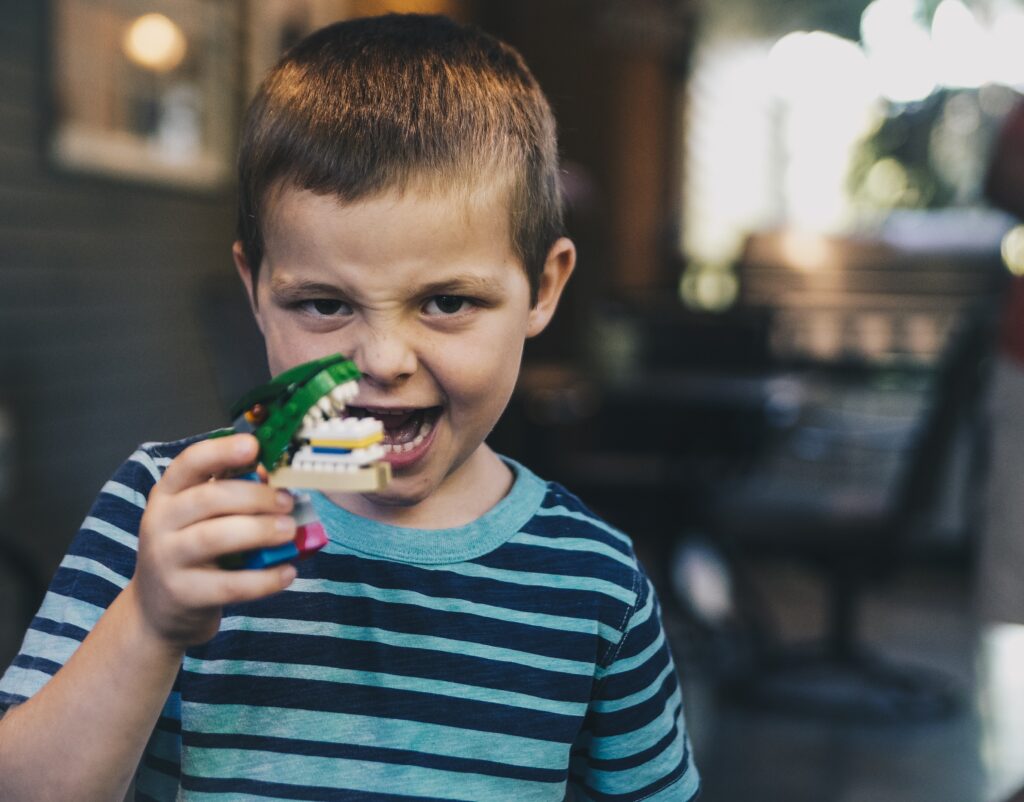Drooling can be caused by postural issues, reflux, numbness, lack of sensation, an impairment of swallowing, nausea, food sensitivity, as a result of medications, poor rest posture of the jaw and/or during teething. In infant development, drooling is very common. We typically see babies drooling into the toddler years. After about two years old, excessive drooling turns into a problem that needs intervention. At three years old, the child should have their full set of baby teeth and there shouldn’t be any drooling at all.
Excessive drooling can be a result of low muscle tone and/or lack of sensation. On the flip side, sometimes, excessive and longterm drool will result in lack of awareness and sensation. The child becomes “numb” to the feeling of the drool since it is something they are used to feeling.
The first step in treatment of drooling is bringing awareness to the drooling. We suggest instead of wiping it off your child’s face you pat it with a cloth, that way the child is getting increased feedback on where the drool is on their face. This aids in increasing the sensation to the feeling of the drool.
Speech pathologists work with your dentist, ENT and/or pediatrician to determine appropriate intervention strategies for when the drooling becomes a problem.
We see many children with autism who experience drooling alongside low muscle tone. Parents report there might be a brief time where the drooling stops but then comes back again. This is where it becomes very confusing to families, because it is unclear if treatment should be sought or not. A speech pathologist works with families to determine if drooling therapy is necessary. We have seen drooling occur alongside growth spurts in children who have low muscle tone. What this start and stop drooling may tell us, is that the child’s system may not be fully integrated and it will come back without intervention.
Drooling is common alongside different neurological and brain based conditions like cerebral palsy. According to McInerney, M. et al, 2018, drooling occurs alongside 40% of children with cerebral palsy due to oral and pharyngeal swallowing challenges. Many of the children we work with have oral motor impairments as a result of cranial nerve damage, resulting in diminished control of the swallow and awareness of the drool. This effects the strength and coordination of the mouth, teeth, cheeks and lips.
We create specialized oral motor strengthening and coordination strategies to help manage the drool. Every person should have customized plans and treatment plans, there is no one stop shop for remediation of drooling. We use a combination or oralfacial myology exercises and tailored therapy programs. And to answer this post’s title YES, we have seen many children stop drooling!
References
McInerney, M.S., Reddihough, D.S., Carding, P.N., Swanton, R., Walton, C.M. and Imms, C. (2019), Behavioural interventions to treat drooling in children with neurodisability: a systematic review. Dev Med Child Neurol, 61: 39-48. doi:10.1111/dmcn.14048
